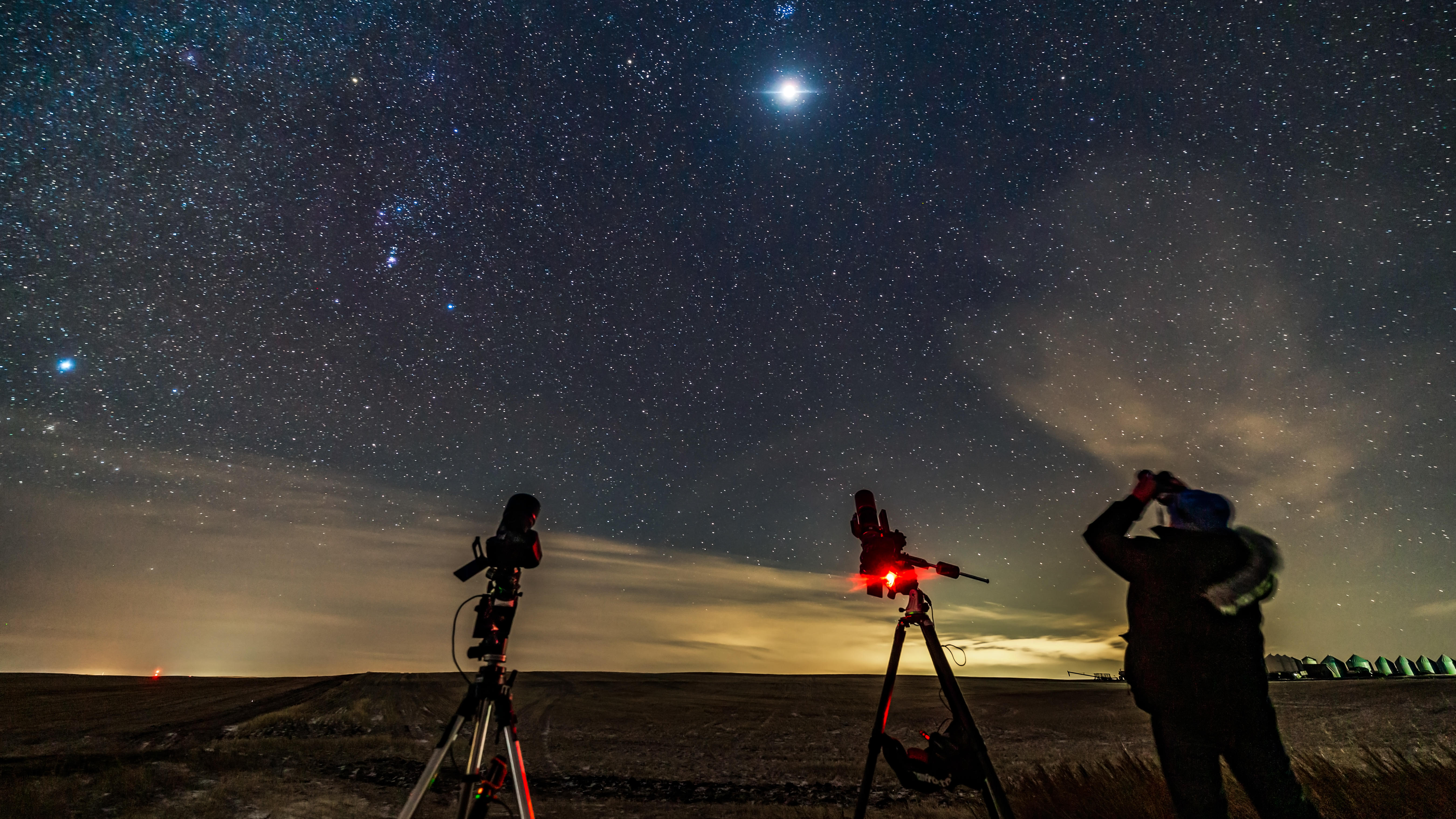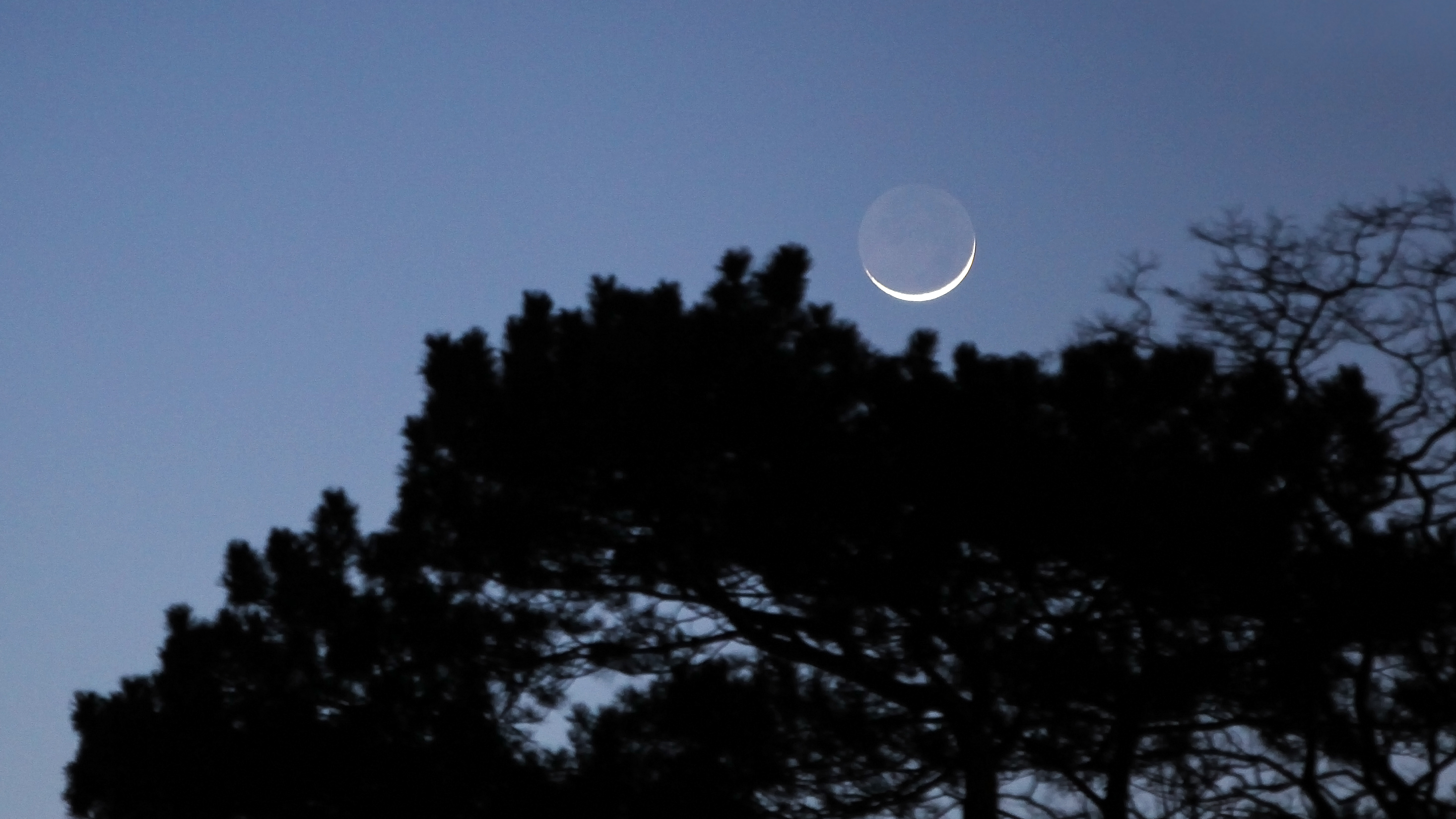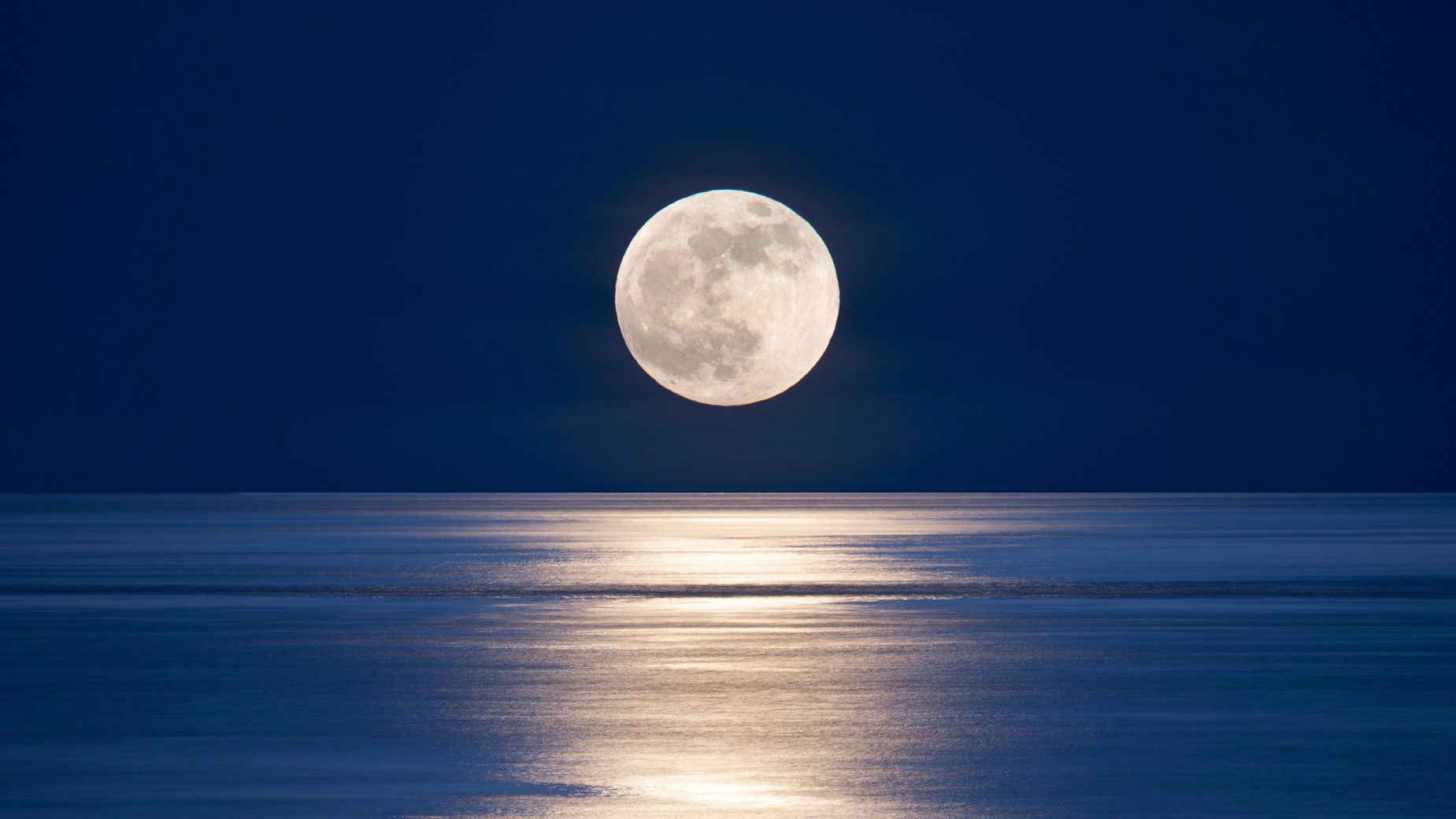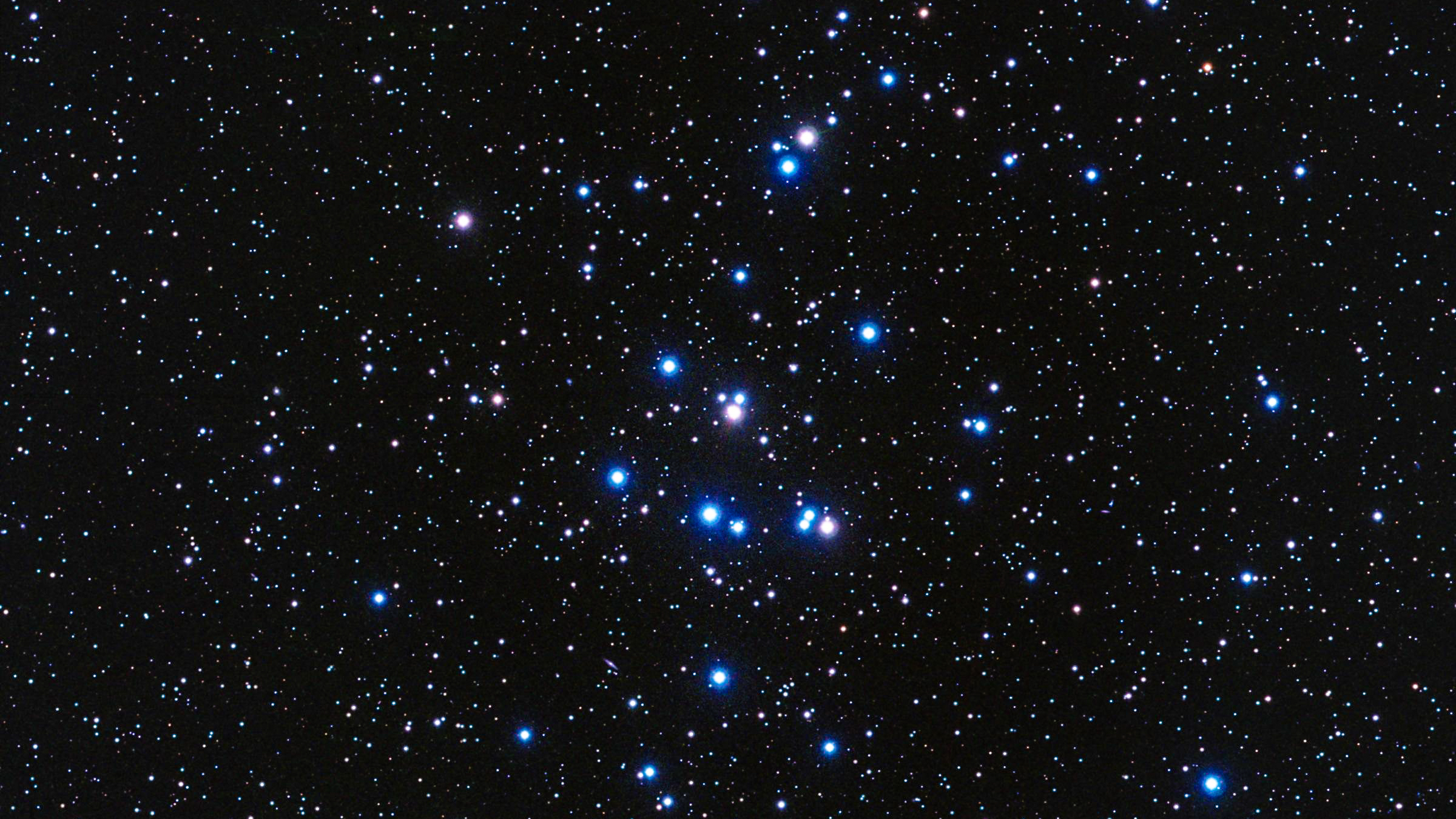
With the bright stars of winter still shining in the south, February is a great time for capturing the Orion Nebula and open clusters in Gemini and Auriga. Jupiter retains its kingly position, dominating the evening night skies, but this month also sees a few more unusual opportunities for astrophotographers. The highlight is the moon’s apparent brush with the Pleiades open cluster, closely followed by a conjunction of Venus and Mars. Add the rise of the full ‘Snow Moon’ and February 2024 is sure to be the perfect month to venture into the night with a camera and tripod.
Friday, 2 February: February’s dark sky window opens

Today sees the beginning of dark skies perfect for astronomy and astrophotography. It’s Last Quarter (or Third Quarter) Moon, when our satellite is half-lit from our point of view on Earth, which sees it rise after midnight. Over the next week, it will rise 50 minutes later each night and shrink to a crescent, leaving evening skies completely dark. They won’t be moonlit again to a serious level until a few nights after the new moon on February 9.
Monday, 5 February: The Moon and Antares
Look to the southeast tonight after dark, and you’ll see a waning crescent moon less than a degree from red supergiant star Antares, the brightest star in the constellation of Scorpius.
Wednesday, 7 February: The Moon and Venus
Shining brightly as the ‘Morning Star’, rises before sunrise to capture Venus close to a slim waning crescent moon. The two objects will be about five degrees apart, so this is a time to use a reasonably wide-angle lens.

Sunday/Monday, 11/12 February: Crescent moon
For many astrophotographers, the monthly appearance of the crescent moon is a popular time to get the camera out. The first evening it appears – the night after the new moon – is challenging since it’s super-slender. So catch it on the two nights afterward. As well as being slightly higher in the western sky right after dark, the dark limb of the delicate crescent moon will also display ‘Earthshine’ – sunlight reflected onto the moon from Earth’s clouds and ice-caps. Experiment with different exposures and HDR modes to capture it, though fisheye wide-angle lenses tend to catch it easily.
Wednesday, 14 February: Comet C/2021 S3 (PanSTARRS)
Discovered in July 2021, Comet C/2021 S3 (PANSTARRS) will tonight reach its perihelion– its closest to the sun – meaning it will shine at its brightest. Comets are hard to predict, so anything could happen, but astrophotographers using telescopes will be best prepared to capture the comet. It’s predicted to shine at around +7 magnitude – just too dim for the naked eye to see but bright enough for camera sensors. It will be near M9, a globular cluster in the constellation Ophiuchus, so visible in the south before dawn. As the month progresses, it will be visible higher in the sky, so keep imaging!
Thursday, 15 February: The Moon and Jupiter
Just three degrees will separate a 32%-illuminated waxing crescent moon and Jupiter tonight, a timely reminder that the giant planet is the only one in the night sky this month worth putting a telescope and camera on.
Friday, 16 February: Moon in the Pleiades
One of the astrophotography highlights of the month will be this close conjunction of the Moon and the most beautiful open cluster of stars in the night sky. The Pleiades, also known as M45, will be visited by the moon over the course of a few hours, though imaging it won’t be easy. Since the moon will be at first quarter (so, half-lit from our perspective), the difference in brightness will mean a very short exposure is necessary for the moon while a much longer exposure will be required for the Pleiades. Try using a mid or long-focal length lens or a telescope,
Saturday, 24 February: Full ‘Snow Moon’

You’ve heard of a ‘supermoon’, but what about a ‘micro moon’? Tonight’s full moon is the farthest from Earth in 2024, so will have the smallest apparent size. It’s a symptom of the moon’s elliptical orbit around Earth. Technically called an apogee full moon, the ‘Snow Moon’ will, as always, be best captured as it appears during dusk on the eastern horizon. Check the exact time of moonrise where you are, ready with a 70-300mm lens, a tripod, and a remote shutter release.
Read: How to photograph the full moon
Wide-angle shot of the month: open clusters

Stars may seem randomly spread around the night sky, but look closely, and you’ll notice clumps of bright stars moving together through space. These are known as open clusters – and several bright examples are visible during winter in the northern hemisphere. Probably the two most famous are the Pleiades (M45) in Taurus, which is visited by the moon this month, and the Beehive Cluster (M44) in Cancer. Hundreds of stars are visible to your camera within each. To image them successfully, you’ll need a tripod and a mid-to-long focal length lens, preferably with a star tracker in between, allowing long exposures and brighter stars. Another technique is to use a wide-angle lens to capture them standing out among their starry surroundings.
Read more:
Astrophotography: How-to guides, tips and videos







